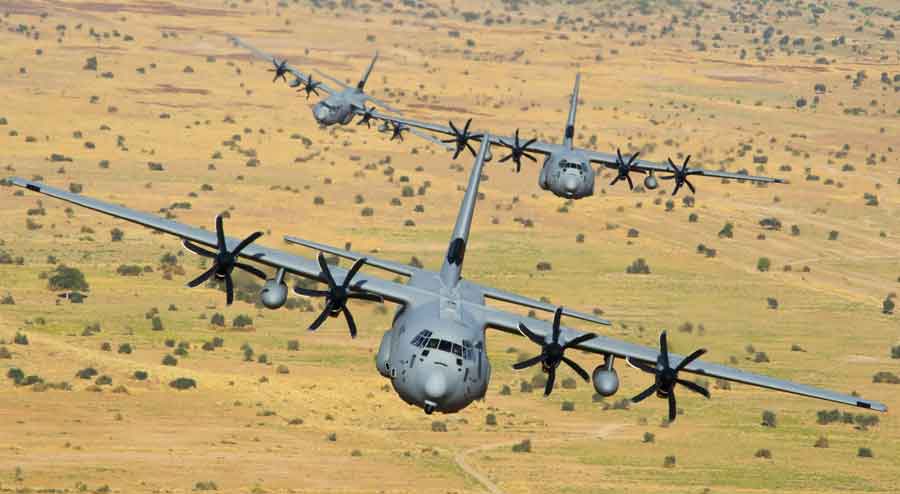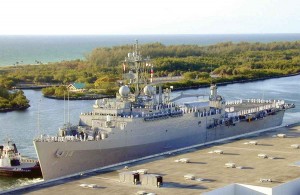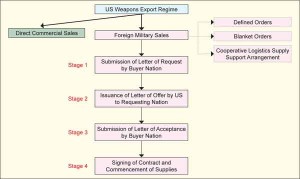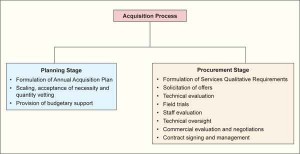India acknowledges the technological superiority of the US weapon systems and wants to develop and produce them through joint ventures. It seeks partnership and not a seller-buyer relationship. However, India must appreciate that being a global power, US has a different perspective of world issues. It wants to safeguard its knowledge-superiority and prevent proliferation of critical technologies. Therefore, US laws concerning export of weapons are extremely comprehensive.
Within a period of less than ten years, India has emerged as the third largest buyer of US arms.
US readiness to sell AN/TPQ-37 Fire Finder counter-battery artillery radar sets to India in 2002 marked the beginning of a new chapter in Indo-US military cooperation. Although the said deal was worth only US$150 million, it was touted as a breakthrough of strategic proportions. Simultaneously, a Security Cooperation Group (SCG) was constituted to coordinate and expedite defence deals. Within a period of less than ten years, India has emerged as the third largest buyer of US arms. In the fiscal year ending September 2011, India signed contracts worth US$4.5 billion. Only Afghanistan (US$5.4 billion) and Taiwan (US$4.9 billion) were ahead of India. It is estimated that the total value of contracts inked between the US and India during the period 2003-2011 exceed US$12 billion.
Some of the major contracts pertain to the sale of the USS Trenton (now INS Jalashwa) amphibious troop carrier ship, P-8I maritime patrol aircraft, C-130J Hercules aircraft and C-17 Globemaster transport aircraft. In addition to some repeat orders, negotiations are underway for the purchase of 155mm Ultra Light Howitzers and Javelin anti-tank guided missiles. On the face of it, the list appears quite impressive. However, all is not well with the current equation between India and the US – both sides are dissatisfied at the current pace of progress of military trade. Despite regular SCG meetings, the relationship has not acquired the required degree of maturity and mutual comfort.
No deal carries transfer of technology provisions. All are pure ‘cash and carry’ sales.
Indo-US military deals are characterised by three significant features:-
- All sales so far have been through government-to-government deals. US companies have not been able to win any major order in open competitive environment. In the case of Medium Multi-Role Combat Aircraft (MMRCA) deal, both the US companies Lockheed Martin (F-16) and Boeing (F-18) failed to make the grade in technical evaluation and got eliminated.
- Sales are limited to the equipment in which the US is an undisputed leader. In other words, India approaches the US Government only when it has no alternate procurement source available to it, thereby indicating a certain degree of compulsion in approaching the US.
- No deal carries transfer of technology provisions. All are pure ‘cash and carry’ sales. This is not a healthy sign, especially as Indian policy makers keep asserting that they are seeking production-partnership in military deals.
It has been a long, arduous and somewhat exasperating journey for both sides. The initial euphoria has given way to a degree of despondency. The anticipated influx of high-tech US equipment to replace ageing Soviet-era military hardware is yet to take place.
Both sides continue to profess their abiding interest in furthering the process and strengthening the bond. India covets a vast array of high-tech US weapons and is ready to pay hard cash for it. On the other hand, the US appreciates India’s needs and is amenable to the sale of latest weaponry. It trusts India with the safeguarding of its exclusive technology. If that be so, the pace of cooperation should have been much faster. Most observers are intrigued by the reasons for a lack of dynamism in Indo-US defence equipment trade.
To start with, there is a need to look at the US defence sales policies and India’s defence procurement regime. It is only then that the degree of their mutual incompatibility and resultant incongruities can be comprehended.
The US appreciates India’s needs and is amenable to the sale of latest weaponry.
Salient Features of the US Defence Sales System
The US is the largest arms exporter in the world. Military hardware is sold either through government-to-government deals (Foreign Military Sales) or directly by the manufacturing companies through Direct Commercial Sales. The US Government also sells stocks held in excess of the requirements of the US forces at highly reduced rates (5 to 50 per cent of original cost) to select countries. Whatever be the mode of sale, all exports are subjected to a rigid licensing regime.
FMS cases are of three types – ‘Defined Orders’ are meant for specific weapon systems, ‘Blanket Orders’ are to cover follow-on support and ‘Cooperative Logistics Supply Support Arrangement’ enables a buyer nation to invest in the US Supply System with access to the US defence stocks. India has been purchasing major equipment from the US under FMS (Defined Orders) route. See Illustration 1.
FMS route is generally preferred in respect of the items which have already been inducted in the US forces. The buyer country gets the benefit of the US experience as regards logistic support, training and operational exploitation. In the case of complex systems, the buyer country gets them fully integrated and configured. Further, these items carry sovereign guarantees, assured after sale support and are sold at the rate at which they had been purchased for the US forces, albeit with additional handling charges.
Once a requested sale is cleared by the US Government, the buyer nation is required to submit a Letter of Acceptance (LOA) along with the initial advance. Every LOA includes Standard Terms and Conditions as dictated by the US laws for acceptance by the buyer. It contains provisions regarding liability, discrepancy reporting and monitoring of equipment usage. A legal contract is signed thereafter. The US Government may supply the item from its own existing stocks or procure it afresh from the producer. One of the major benefits of FMS route is a total absence of middlemen. Being government to government transactions, they remain ‘clean’ and do not invite adverse publicity. For India, this is an important issue.
While valuing the close relationship with the US, India is wary of getting drawn into an exclusive defence embrace.
Attributes of the Indian Defence Procurement Process
Initially promulgated in 2002 for outright purchases, India’s Defence Procurement Procedure (DPP) has undergone five revisions and its scope has been enlarged to include indigenous development of defence equipment. DPP aims to ensure expeditious procurement of the approved requirements of the Indian armed forces in terms of capabilities sought and time frame prescribed by optimally utilising the allocated budgetary resources. Demonstration of the highest degree of probity and public accountability, transparency in operations, free competition and impartiality has been made a cornerstone of the procedure.
As can be seen from Illustration 2, the acquisition process is divided into planning and procurement stages. On receipt of a procurement proposal from the concerned Service Headquarters (SHQ), the Ministry of Defence (MoD) examines its necessity to accord necessary approval and earmark required budgetary support. Procurement stage commences thereafter.
The sponsoring SHQ evolves Qualitative Requirements (QR) of the equipment sought. QRs are minimum military requirements that are essential to the task(s) to be performed by the equipment being procured. All known vendors are invited to submit their technical and commercial proposals. Technical evaluation (including field trials) identifies vendors whose equipment is considered acceptable for procurement. Contract is signed with the lowest bidder amongst the technically successful vendors.
The above process has the following four key essentials:-
- Need-based procurement as per the parameters specified by the services.
- Maximum competition through invitation to all known vendors.
- Technical evaluation to validate performance claims.
- All vendors who meet QRs are considered at par and the lowest bidder is declared the winner.
.









An exceptionally well analysed article. Brilliant suggestions. Hope government pays attention. Kudos to IDR